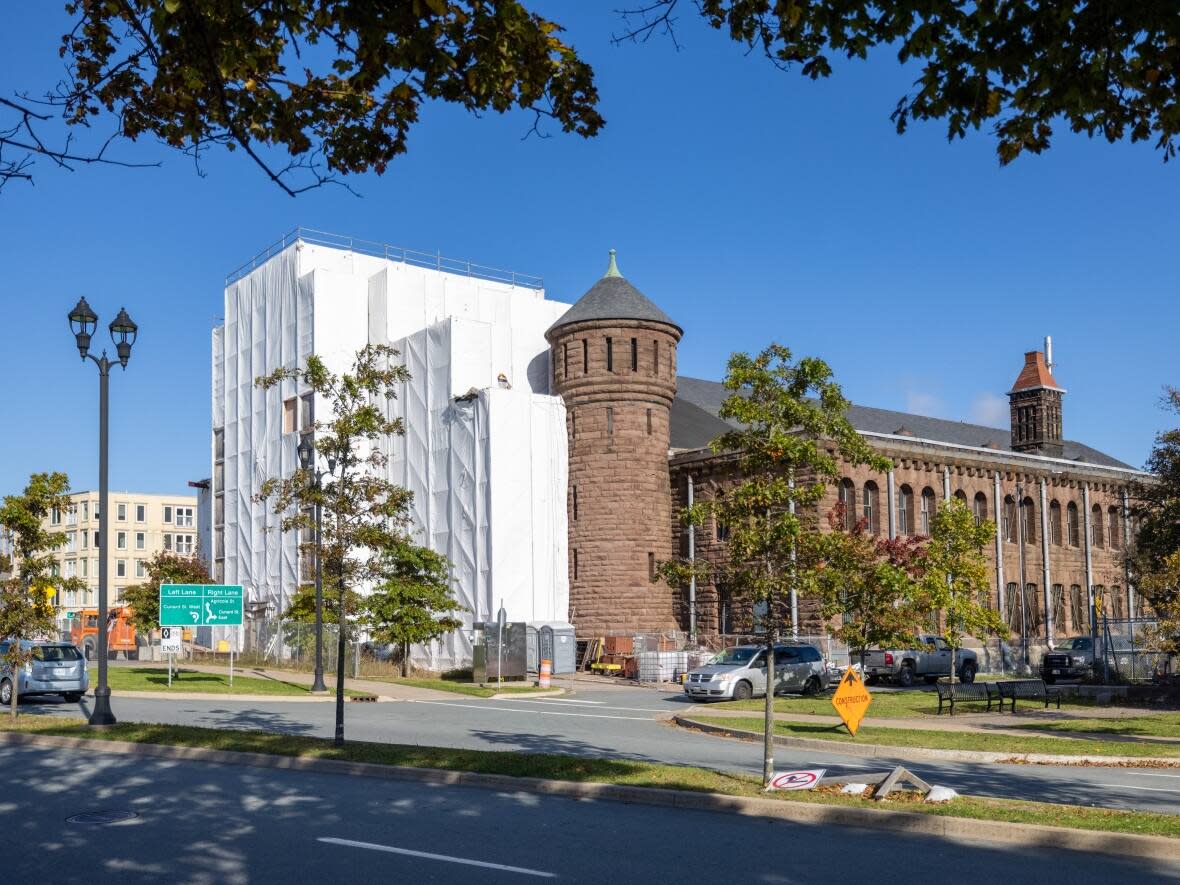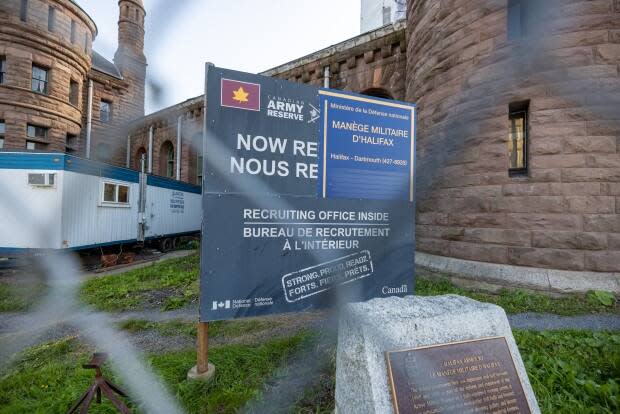Halifax Armoury restoration $30M over budget, three years behind schedule

Restoring the historic Halifax Armoury is taking longer and costing more than expected — $30 million more and three years longer — CBC News has learned.
The estimated $130-million price tag when work began in November 2017 has now risen to $160 million.
Completion of the first phase, rebuilding the iconic west wall facing the Halifax Common, has moved from 2019 to 2022.
The Department of National Defence says the project encountered numerous challenges, including an initial six-month pause to "finalize heritage factors," and a one-year delay securing an adequate supply of sandstone. Then there was the COVID-19 pandemic.
That made it harder to get building materials and restricted travel to Halifax by consultants and construction workers.
'Additional work was not planned'
Meanwhile, the job grew to include geothermal heating and cooling, more extensive sandstone repair, upgrades to meet new national building code standards, additional removal of hazardous materials and inclusion of metal roof shingles for longevity.
"This additional work was not planned in the original scoping but as is often the case with complex heritage restoration projects, additional and unforeseen work is required, especially with older buildings that continue to deteriorate due to their age," DND spokesperson Andrew McKelvey said in an email.
Design work for Phase 2 — to fix up the rest of the building — is underway. Construction is expected to begin in 2023 and take five years to complete.

"Heritage projects are often complex, and require prudent reviews of project requirements and heritage obligations before proceeding with actual restoration work," McKelvey said.
"In the case of the North Park Armoury, we are taking the time to make sure that all work meets both heritage and future operational requirements, while incorporating green design elements and sustainable construction practices."
The department declined to make an official involved in the work available for an interview.
Fixing a 122-year-old building
The restoration will provide structural and interior upgrades to support operations of the Princess Louise Fusiliers, Halifax Rifles (Royal Canadian Armoured Corps), and one army cadet corps, while maintaining the heritage character of a 122-year-old National Historic Site of Canada.
The first phase shored up the west wall that has been slowly tilting outwards since it was damaged in the 1917 Halifax Explosion.
That required construction of an interior wall to hold up the roof while masonry, windows and the interior mezzanine were dismantled.
The front entrance has been expanded to accommodate larger vehicles. It was originally built for horses.
DND says this work, and the refurbishing of original windows at an Ottawa shop specializing in heritage restorations, is complete.
New roof decking and shingles, flashing at parapets, and installation of new entry doors for the drill hall all remain to be completed.
Phase 1 was expected to cost $25 million. It is now estimated at $30 million, which includes expanded design work.
Incorporating energy efficiency into the old drill hall
Phase 2 will rehabilitate the rest of the building's envelope, including masonry, windows and roof, as well as major upgrades to the interior.
This is where costs are really expected to jump from an estimated $105 million to $130 million — bringing the final estimate to $160 million when work is completed in 2028. That is 23 per cent over the initial estimate.
DND intends to incorporate a slew of energy saving features including smart meters, solar panels, high-efficiency water fixtures, heating and cooling systems, LED lighting and thermal heating in the drill hall floor.
Heritage advocates in Nova Scotia say restoring what DND has called "the poppy in the lapel of Halifax" is worth the effort.
"Our members certainly feel the current renovation to the North Park Armoury is worth it — not only for its obvious architectural legacy and its military presence, but also for its support to the citizens of Halifax over many years in times of need and celebration," says Leo Deveau, chair of the Halifax Military Heritage Preservation Society.
"With such large restoration projects there will always be 'slippage' in the expected timelines for completion," he said.

Historian Allen B. Robertson says the armoury is "the last of its kind in Canada and not just a building sitting there, it actually still maintains a function, it is still in use."
The heritage designation obliged Ottawa to meet high standards that add to the expense like obtaining the right sandstone.
"I think that there is a commitment to the authenticity of preservation. It's not a matter of where you can put vinyl siding on it. It's part of the essential structure and the maintenance of the fabric of the building," he said.
The search for sandstone
Finding the same Nova Scotia sandstone used during construction between 1895 and 1899 was one of the first hurdles.
The original quarry near Pugwash on the Northumberland Strait is long gone.
A replacement quarry nearby proved unsuitable. That forced supplier Atlantic Sandstone to find sandstone within the same geological seam six kilometres from the first site, buy the property and open another quarry.
Once reconstruction started in Halifax project managers realised more stone was needed.
They turned to a more durable sandstone from England for window sills.
The delays have not had an operational impact on the Armed Forces and will keep the Halifax Armoury around for another 100 years, McKelvey said.
"This rehabilitation project is an excellent example of how DND is working to protect the heritage character of its infrastructure, while supporting the modern operational capabilities of the Canadian Armed Forces."
MORE TOP STORIES


